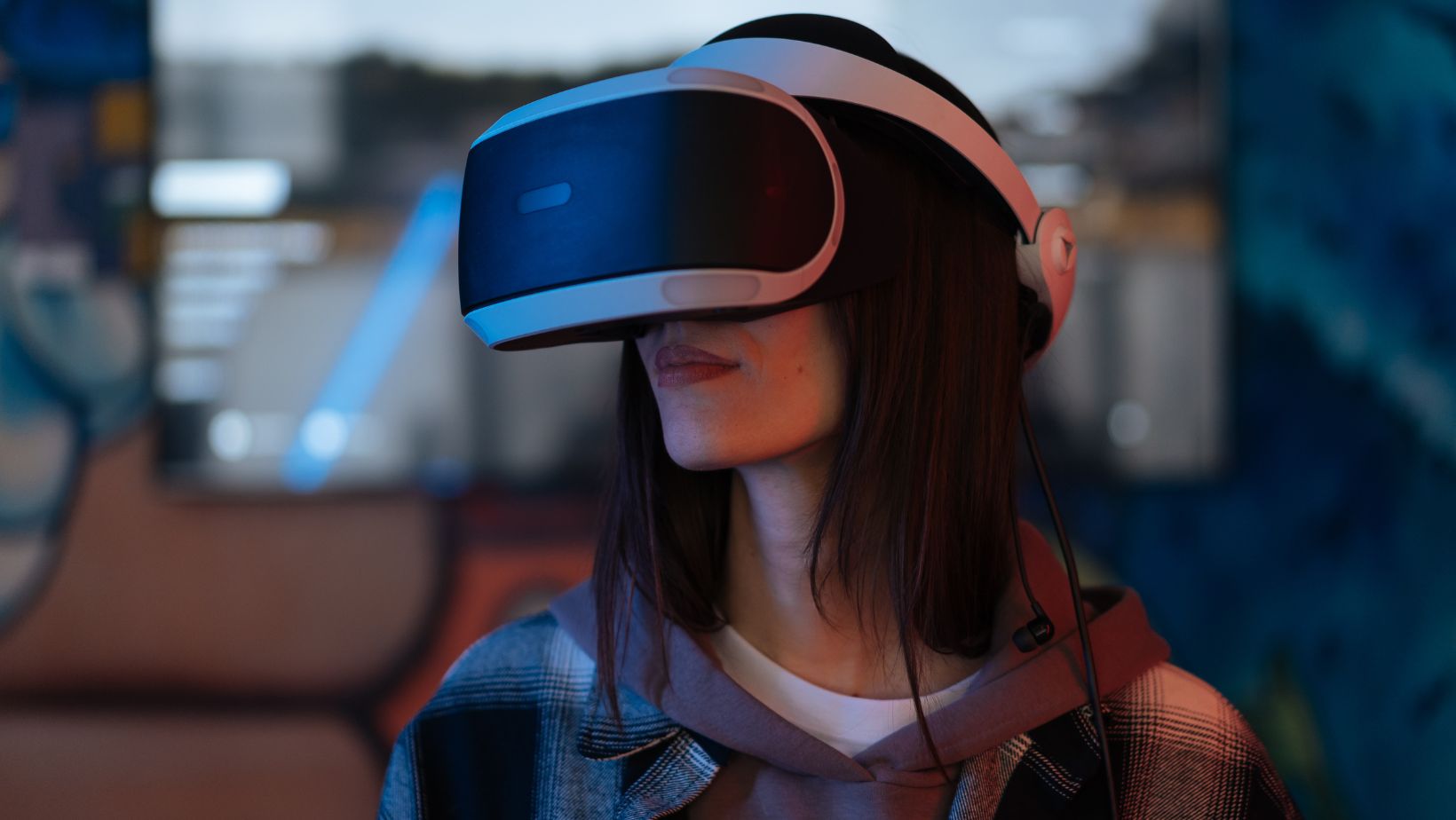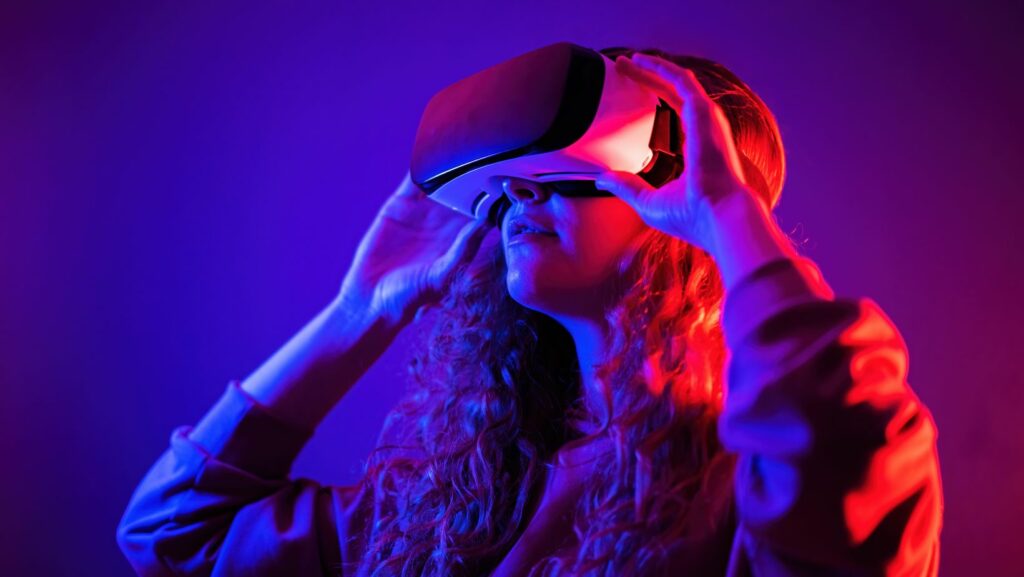The term ‘virtual reality’ and ‘augmented reality’ are more than mere cliches. Both technologies hold the potential to change the world, and entire industries. In the educational world, advertising, and so many other fields, the use of value-added VR and AR technology is redefining the limits of what is conceivable.
As a new leader in the gaming industry, Divinecasino is utilizing these technologies in VR. The platform provides its users with unmatched immersive experiences that redefine fun. In this article, we study how innovative virtual experiences are using AI alongside VR to alter users’ interactivity by simulating and engaging them in ways they never imagined possible.
Introduction: Virtual Headsets as Game Changers
The integration of VR headsets, paired with VR apps into daily use technology, has sparked competition on design structure in the World Wide Web. This movement is not restricted to games and fun activities; educational technologies, healthcare services, virtual tours to properties of interest, and even entire conferences conducted online have entered the market. These innovations are shifting the focus from content to design of digital products in real time. As change drives industry solutions, the virtual world is positioning itself at the forefront of the competition in designing dynamic content for computers interactivity.
Purpose-built innovation virtual experiences allow users to engage in activities through a sophisticated apparatus like a VR headset or phone, creating opportunities without boundaries.
Understanding Virtual Reality and Augmented Reality
Virtual Reality (VR)
Virtual Reality (VR) immerses an individual in a simulated setting like a 3D video game that can be interacted with, enabling them to respond to simulated stimuli as if they are real. A VR headset offers high resolution and accuracy, simulating as if an individual is actually present in a certain place and enabling them to manipulate various elements. With the advances in technology, VR accessories like headsets and goggles are gradually becoming portable and light, allowing consumers to instantly slip them on and find themselves in an all-new universe.
Characteristics of VR incorporate but are not limited to the:
- Experience and simulation of captivating settings like oceans, forests, claimable islands that fully absorb the users attention.
- Claimable virtual territories with the support of the slogan “the sky is the limit”.
- LYRIC applications targeted toward children.
- Exercise design and movement.
Augmented Reality (AR)
Oppositely, augmented reality combines the physical environment with a digital overlay of information. Users of AR devices can visualize and interact with virtual objects in their geolocated surroundings. This fusion of the physical and digital worlds is changing how we interact with content, as well as how we interact with the real-world applications of the content.
Important features of AR can be found in the following domains:
- Tours, both virtual and in-person, where users can view and interact with digital elements in real-world spaces.
- Marketing strategies that place AR features in their campaigns to increase consumer participation.
- School programs that create educational materials by digitally enhancing the traditional classroom experience.
An Assessing Study of AR and VR
The following table alongside this analyzing text captures essential characteristics of both VR and AR to provide further insight on how these technologies impact society.
| Feature | Virtual Reality (VR) | Augmented Reality (AR) |
| User Immersion | Fully immersive; Users are entirely within the digital world. | Partially immersive; serves to augment the real world. |
| Required Equipment | VR headsets, controllers, and occasionally haptic feedback devices. | Smartphones, Tablets, AR glasses, and other AR enabled devices. |
| Primary Application | Gaming, Virtual tours, and immersive educational experiences. | Property tours, marketing, real world interactions. |
| Interaction Mode | Interaction within a simulated environment using VR Technology. | Overlaying digital content to a physical space. |
| AI Integration | AI powered simulations that customize virtual reality experiences. | Using AI to augment data overlay in real time information display. |
By analyzing the information noted, it covers the purposes of both technologies to emphasize the varying demands of different industries as well as the changing approach to environments of non-physical nature.
Transforming Industries: Real-World Applications
Learning Resources
The development of VR technology is enhancing the world of education as students can experience learning to the fullest extent VR has to offer. With virtual reality experience platforms, students can conduct science experiments, visit historical sites, or attend virtual events right from their homes. This state-of-the-art technique helps in refining quality content made available to learning for people regardless of their socio-economic class.
Virtual instructors can enhance students’ learning by providing:
- Real life practices of procedures through simulation based on specific professions.
- Guided virtual field trips to sites of scientific, historical, or geographical importance.
- Group assignments in social VR platforms where students from different countries can meet and socialize.
- Adjustable learning for users with additional support needs such as those provided by AI tutors who adapt resources with every request and alter materials while the learner engages with them.
Health and Therapeutic Practices
There is an emerging section of the virtual reality market focusing on the use of virtual reality technology with patients and in nursing. VR technologies are being applied for the creation of therapeutic environments, pain treatment applications, and even in post-traumatic stress disorder treatment.

The application of a real virtual form environment is important for safe and effective new-therapeutic procedures.
Main uses in medicine are:
- Add Virtual and Augmented Reality patients in rehabilitation with disability.
- Patient centric approaches to promote classroom recovery include interactive designs tailored to optimize patient engagement with technology.
- Patient care has evolved with the integration of AI into diagnostics and treatment simulation systems.
- Enhanced patient’s virtual tours of the hospital facilities assist them in better orientation to the facility and reduce discomfort.
Property and Real Estate
The real estate field is adopting VR technology through virtual property tours and windows. Buyers no longer have to travel physically for viewing as they can explore every nook and cranny of the property through a VR headset. The application of VR and AR technologies is cost effective due to the reduction of traveling associated with property visits.
Benefits include:
- Novel experiences offered through virtual visits and impressions of the property.
- Interactivity that enables one to move about and control visualization of digital information laid on top of static information.
- Virtual projection of alteration of spatial features (renovation).
- Improved participation in marketing campaigns and showcases of the property resulting in increased employment efficiency.
Gaming and Entertainment
The entertainment and gaming industries are perhaps the most mainstream adopters of virtual reality. Virtual reality technologies immerse gamers and entertainment consumers into a virtual world where the real world application of VR technology is the norm. Interactive design applications in games have advanced rendering immersive experiences to gamers beyond what is offered in traditional VR applications.
Some of the Highlights are:
- Creating distinctly engaging worlds through VR.
- Gamers’ connection to one another through social VR platforms enables global interaction.
- AI technology that allows for modification of gameplay and integrated into innovative approaches AI solutions.
- The advancement of VR technology regarding the shared aspects of experiences improving multiplayer and single-player experiences.
Social Interaction and Marketing
Bold new approaches to Social VR creates enhanced social interaction through brand-consumer engagement and transforms virtual interactions into revolutionary branding opportunities. Marketers can seize the moment, as VR and AR technologies can simulate products and experiences in captivating ways, from virtual events to innovative hands-on product demonstrations. These technologies can reshape industries, increase consumer engagement, and drive business success.
Benefits of Marketing listed below:
- Enhanced virtual reality experiences that provide a novel approach to social interaction.
- Image-driven marketing as a revolutionization of existing ad standards, changing traditional advertising to nurturing an experience in aspects of Virtual Reality or Augmented Reality.
- The provision of instantaneous, realistic virtual interactions with measurable results increases engagement and efficiency.
- Performance-driven measuring interaction analytics within a virtual environment powered by AI.
Digital Transformation’s Future
The Contribution of AI to Virtual Experiences
AI facilitates the development of immersive virtual and augmented reality technologies. Developers can personalize and automate VR experiences by using AI. Tailoring content, user behavior prediction, and interaction guarantees make the virtual experiences truly engaging and immersive.
In addition to AI implementation, the following areas are enhanced:
- Virtual objects and their corresponding avatars are much more lifelike and behave identically to the real-world counterparts.
- AI customization enhances the interaction of users with digital environments beyond imagination.
- Simulation of advanced scenarios becomes easier and more effective for learning and training.
- Worlds that can be new, practical, innovative and full of imagination can be created.
The Gaze: New Innovative Possibilities and Uses
Looking forward, the boundaries of VR and AR technology are expected to grow and change a number of industries including educational experience, health care, and marketing and social VR platforms, in addition to these, the scope of virtual experiences are beyond imaginable.

Expected trends include:
- Beyond sports and entertainment, there are applications in the real world for practical everyday usage.
- The interactive design that merges the physical and digital worlds will change how we define these two spaces and redefine innovation.
- Further improvements in VR technology will enable simulating true-to-life settings even more accurately.
- Disruptive virtual reality innovations will redefine industries as they unlock new levels of accessibility and immersion.
Meeting Obstacles Set by a Virtual World
Even with all the exciting possibilities, the rapid development of VR and AR technologies comes with some hurdles to jump. Some of these include low availability, costly VR headsets, and the presence of more advanced AI support systems. No matter the case, the will to apply these technologies fuels innovation. This encourages many developers and industry leaders to strike a balance between price, performance, and experience.
Focus on solving these issues include:
- Creating more affordable fogged glasses without losing the quality of a clear view.
- Improvement of interaction capabilities of VR and AR systems with the digital world to make them as effortless and intuitive as possible.
- More efforts directed towards the development of processes that reproduce life-like conditions applicable to the broadest range of constituents.
- Stimulating the development of technologies with practical and innovative goals.
Conclusion: Reshaping the Digital Reality
Collaborative virtual experiences mark the arrival of a new age in interaction to be paced with the entire new era in digitization. Utilizing VR technologies and virtual platforms, industries are not only revolutionizing existing applications but are also developing new domains acceleration. The advancement of VR and AR has digitally transformed them as every aspect, ranging from VR headsets to the design of the user interfaces, touches the future, which is expected to integrate the real and virtual worlds seamlessly.
There is no limit to how far businesses, educators, healthcare professionals, marketers, and many more can go when they incorporate real-world practices into virtual environments. The fact that these technologies are and will continue to be autonomous AI powered solutions ensures that they are not fixed, but learn, adapt, and improve, enabling a new era of VR applications that will transform how we engage with the digital world.
In summation, the blend of virtual and augmented reality is one of the factors contributing to the advancement of technology we are experiencing today. The prospects for the future are here—and will undoubtedly continue to be transfigurative, interactive, and innovative—because of the ability to create deeply immersive experiences and real-time interaction. These technologies will continue to challenge the limits of what is possible in the virtual world, through immersive educational experiences, virtual tours, and revolutionary VR solutions.
It is clear while exploring these new opportunities that the world of digital interaction is transforming at a fast pace—far from being a future fantasy. Development in the field of immersive technology will absolutely transform sectors and simultaneously change our perception of social interaction and the act of creating content. Innovation will bring us to a time where the digital world is experienced and engaged with more profoundly than reality itself.
The utilization of VR and AR, and the ongoing development of AI, interactive design, and other creative interfaces all contribute to changing the digital space and our way of life in an integrated fashion. The entirety of what makes up a virtual experience starts from what has been defined as VR technology, and there are innumerable possibilities for expansion of what is coined as an ever-expanding virtual universe.
The table 1 above has combined the salient features of the advantages of VR and AR, which further highlight the application spectrum of these technologies from educating people in an immersive manner to employing digitally transformed real-world operations. Innovations are in scope concerning educational technologies to bridge the gap between physical reality and the virtual world as we continue to advance into a boundless future.
To conclude, novel virtual experiences capture not only how we perceive reality, but also transform the interaction domains as we know them. The convergence of augmented and virtual reality will revolutionize things interactively with great impact, and innovation through the view of the future appears bright. It is essential to leverage technology now to prepare for future scenarios where reality and virtual stimuli synergistically come together in every sense imaginable.
This detailed analysis of the uses of virtual reality and augmented reality showcases the boundless opportunities available. As the quality of VR headsets and VR technology advances, and AI-powered solutions take the lead, the digital landscape is poised for unprecedented growth that will alter industry standards and engagement with the environments for the computers. The advanced era of innovation in virtual reality has arrived and its effects will be across all fields including but not limited to healthcare, education, and even marketing.
Take hold of the future, integrate success ideas, and become a part of the revolution that is changing our world—one immersive experience at a time.

